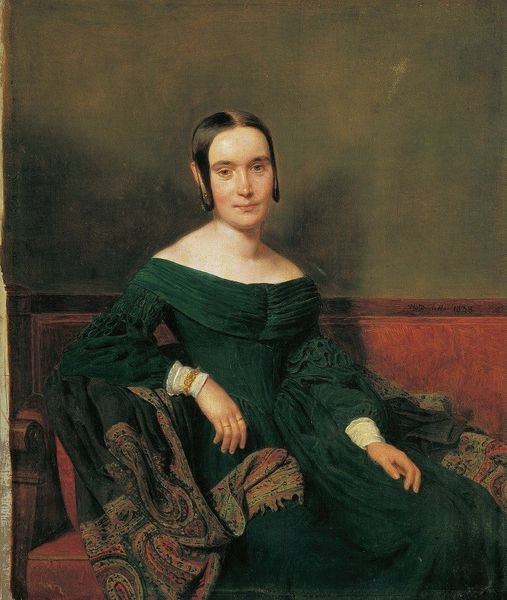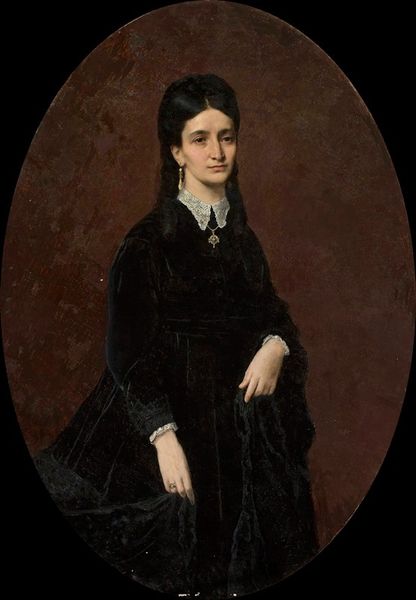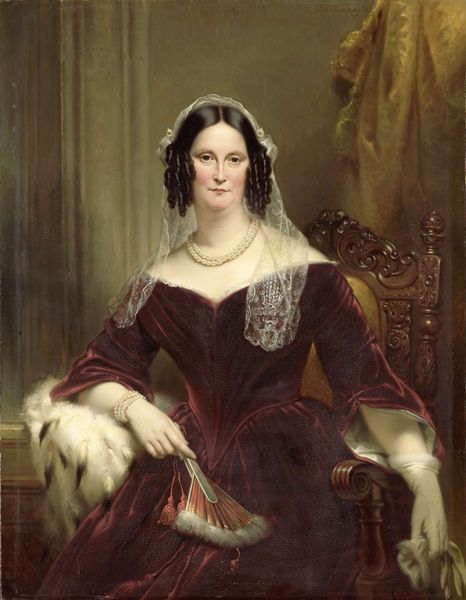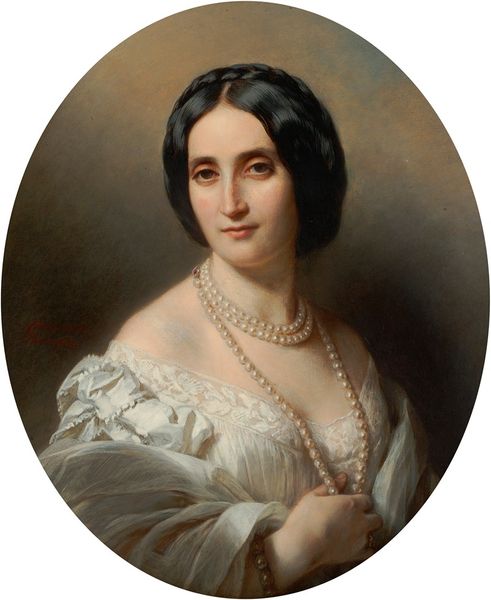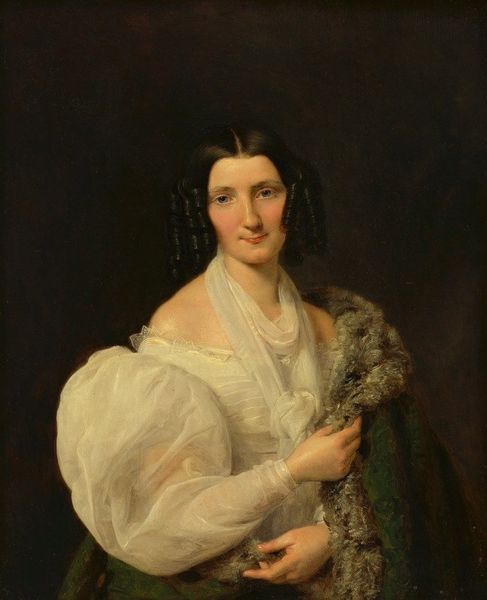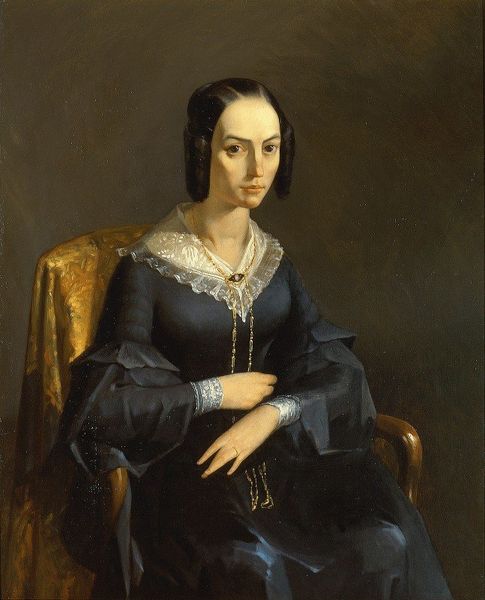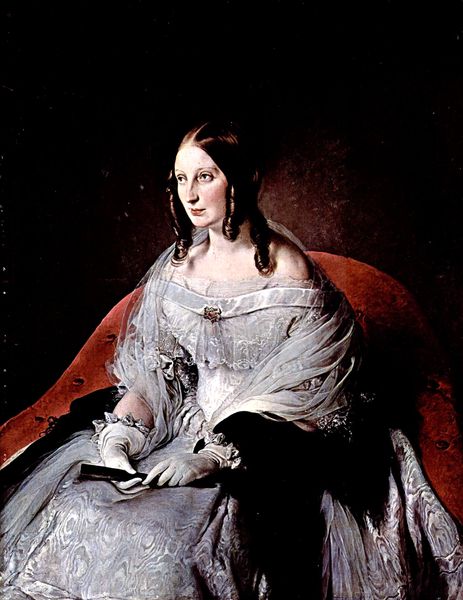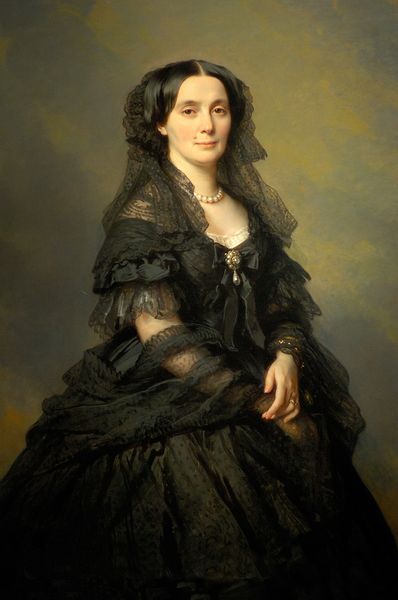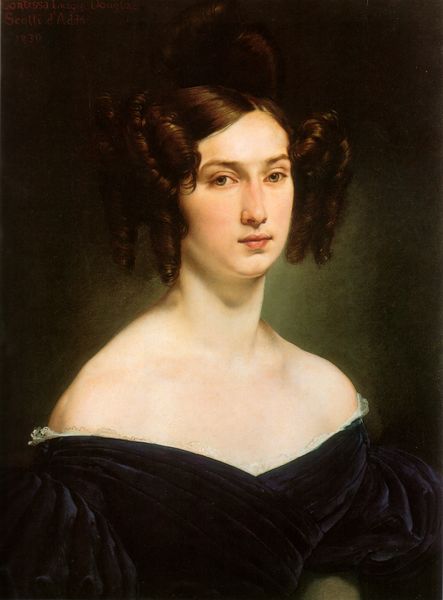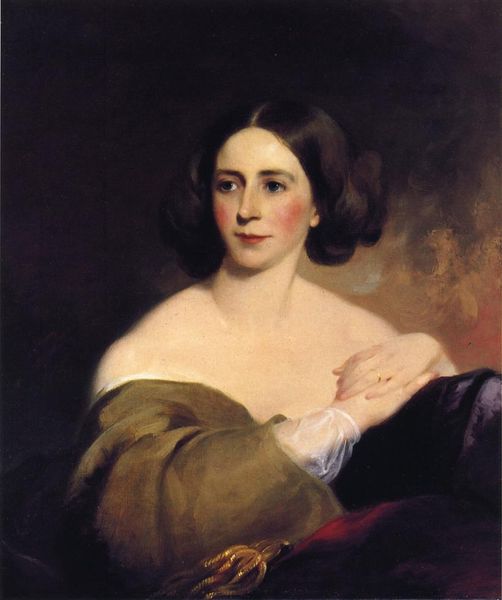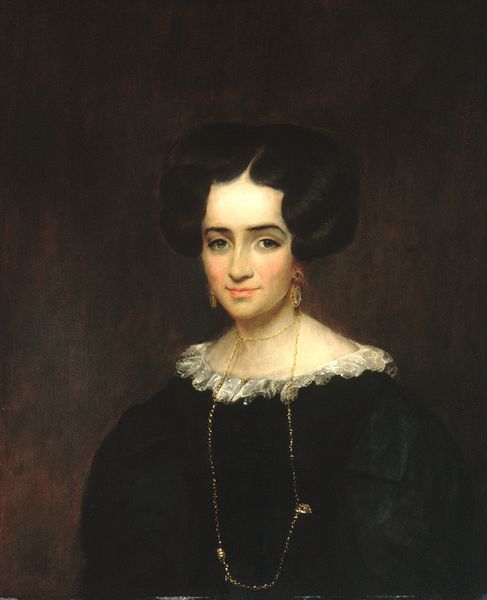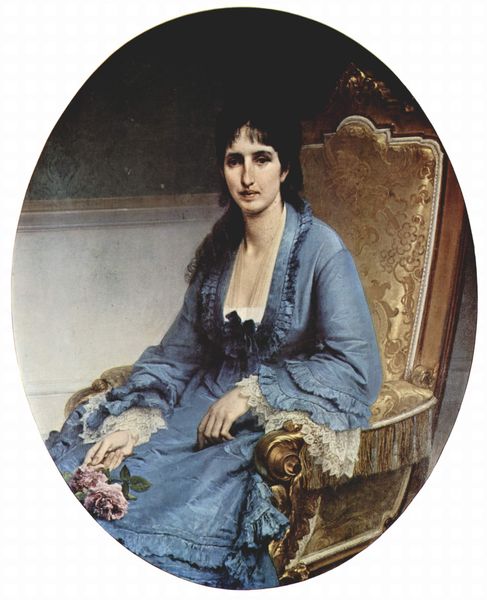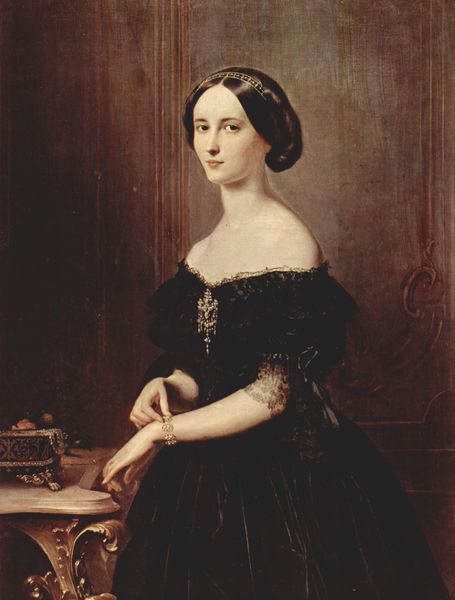
Dimensions: 120 x 94 cm
Copyright: Public domain
Editor: We’re looking at Francesco Hayez's “Portrait of Matilde Juva Branca” from 1851. It’s an oil painting depicting a woman in a dark dress with lace details, a rather serious expression, and… Is that a fur stole? The composition is classic. What can you tell me about its cultural context? Curator: Hayez painted this during a pivotal period in Italian history, just before the full wave of the Risorgimento. While overtly a portrait, works like these actively constructed ideas around national identity, class and gender. The painting is in Milan, then part of the Austrian Empire, reflecting the complex social landscape. Editor: So, how would a portrait like this, of presumably a wealthy woman, contribute to nation building? Curator: The sitter's clothing, for instance, the subtle elegance, can be interpreted as a representation of Italian sophistication. But think further: Who gets represented and whose story gets told? Consider the public role of art in shaping perceptions, even then. Do you think it would send a different message today? Editor: Definitely. Today, a portrait like this might spark conversations about wealth inequality, who has access to art spaces and representation in media. Curator: Precisely. By understanding the socio-political forces at play during its creation and subsequent exhibition history, we grasp the artwork’s role in articulating and perpetuating social hierarchies, in the past and the present. Editor: I never thought about portraits having a political life of their own! That's fascinating! Curator: Reflecting on it, perhaps what is visible on the canvas represents much more. Art can function as a tool for both social affirmation and subtle critique.
Comments
No comments
Be the first to comment and join the conversation on the ultimate creative platform.
